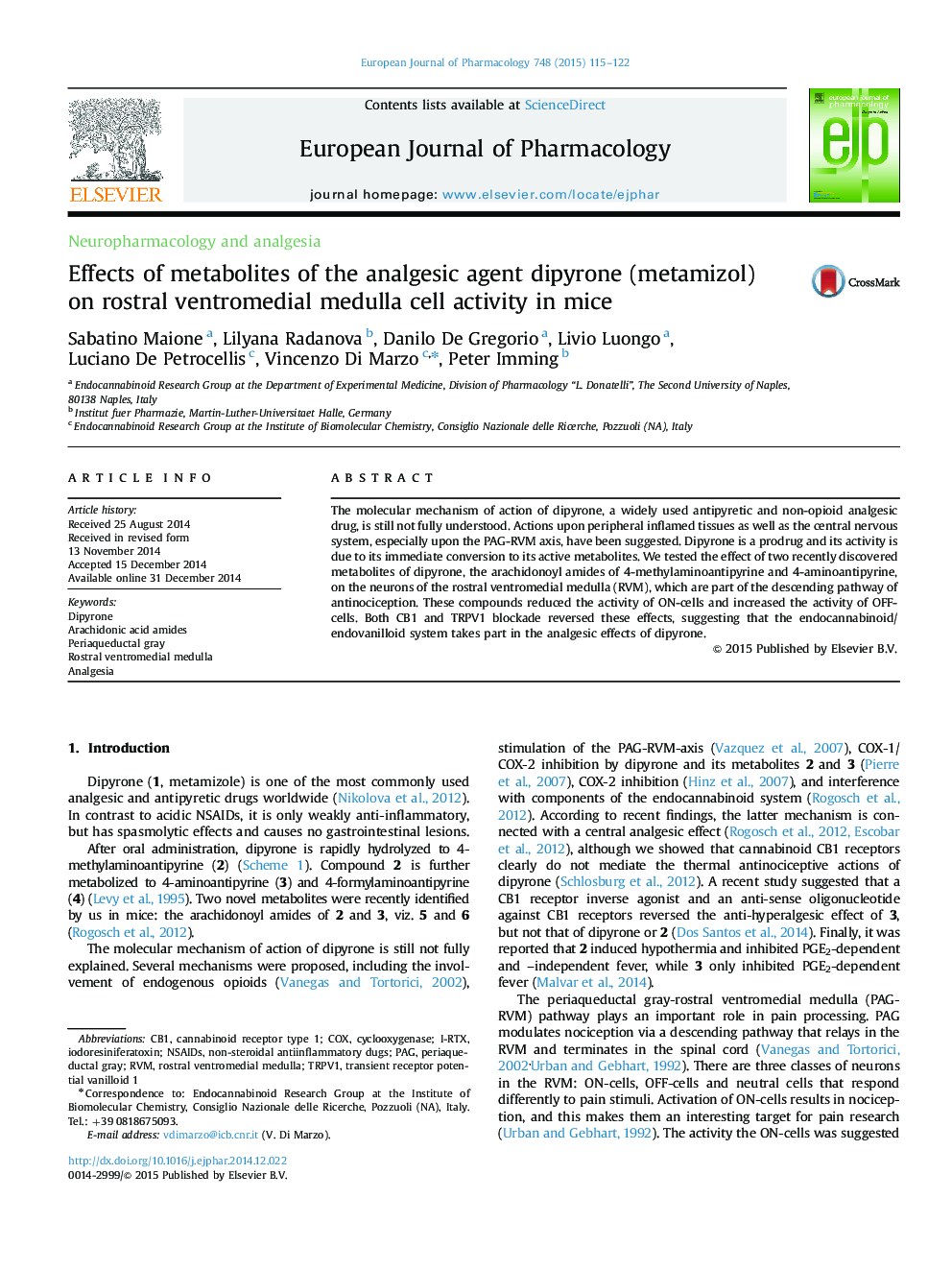| Article ID | Journal | Published Year | Pages | File Type |
|---|---|---|---|---|
| 2531529 | European Journal of Pharmacology | 2015 | 8 Pages |
The molecular mechanism of action of dipyrone, a widely used antipyretic and non-opioid analgesic drug, is still not fully understood. Actions upon peripheral inflamed tissues as well as the central nervous system, especially upon the PAG-RVM axis, have been suggested. Dipyrone is a prodrug and its activity is due to its immediate conversion to its active metabolites. We tested the effect of two recently discovered metabolites of dipyrone, the arachidonoyl amides of 4-methylaminoantipyrine and 4-aminoantipyrine, on the neurons of the rostral ventromedial medulla (RVM), which are part of the descending pathway of antinociception. These compounds reduced the activity of ON-cells and increased the activity of OFF-cells. Both CB1 and TRPV1 blockade reversed these effects, suggesting that the endocannabinoid/endovanilloid system takes part in the analgesic effects of dipyrone.
Graphical abstractFigure optionsDownload full-size imageDownload high-quality image (128 K)Download as PowerPoint slide
